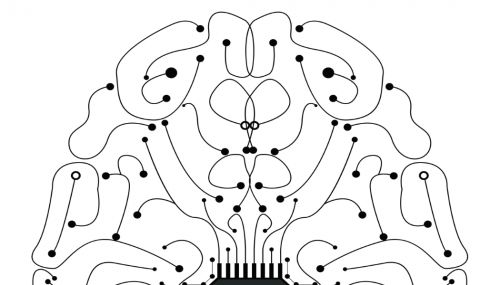All
Fusion Achieves a Net-Energy Gain
by Ed Burke and Kelly Burke, Dennis K. Burke Inc.

A first step toward a new energy resource
In December, the U.S. Department of Energy announced a monumental milestone in nuclear fusion energy research. For the first time, a “net energy gain” was achieved by scientists from the Lawrence Livermore National Laboratory (LLNL) in California.
Their team at LLNL’s National Ignition Facility (NIF) conducted the first controlled fusion experiment in history to reach this milestone, also known as “scientific energy breakeven,” meaning it produced more energy from fusion than the laser energy used to create it – a process known as “ignition.”
The achievement of fusion ignition at the LLNL is a major scientific breakthrough that was decades in the making. It will now pave the way for advancements in the future of carbon-free, clean fusion energy.
It’s Fusion’s Big Moment
Nuclear fusion power has frequently been called the “holy grail” of energy creation. The successful fusion breakthrough in California sets the groundwork for creating a pathway to clean energy.
“Simply put, this is one of the most impressive scientific feats of the 21st century,” said Jennifer Granholm, U.S. Energy Secretary. “This is a landmark achievement for the researchers and staff at the National Ignition Facility who have dedicated their careers to seeing fusion ignition become a reality. This milestone will undoubtedly spark even more discovery,” she said.
Nuclear fusion technology has actually been around since back in the days when they were creating a hydrogen bomb, but using fusion technology to create clean energy was out of reach and has required decades of research.
“We have had a theoretical understanding of fusion for over a century, but the journey from knowing to doing can be long and arduous. Today’s milestone shows what we can do with perseverance,” said Dr. Arati Prabhakar, the President’s Chief Advisor for Science and Technology.
“The pursuit of fusion ignition in the laboratory is one of the most significant scientific challenges ever tackled,” LLNL Director Dr. Kim Budil said. “Crossing this threshold is the vision that has driven 60 years of dedicated pursuit. These are the problems that the U.S. national laboratories were created to solve.”
How Fusion Works
Nuclear fusion is how stars, like our sun, generate their power. Fusion energy releases a tremendous amount of energy when two light nuclei are forced together through intense heat and pressure to form a heavier nucleus. It’s a characteristic of stars, like the sun, where pressure from gravity and heat triggers an ongoing fusion. It combines two hydrogen atoms, producing helium and creating clean energy.
In a process called inertial confinement, Livermore researchers focused 192 enormous lasers into a tiny metal capsule (roughly the size of a pea). Inside the capsule, the lasers heat a tiny fuel pellet containing deuterium and tritium, compressing it to a density and temperature that fuses atoms from the fuel and triggers fusion.
In the December fusion ignition, the process yielded (in a fraction of a second) an output of 3.15 megajoules of fusion energy, while the lasers consumed only 2.05 megajoules.
Fusion vs. Fission
Both fusion and fission make changes to an atom’s nucleus. The difference is that fusion involves the joining of atoms, and fission involves the splitting of atoms.
Currently, our nuclear power plants use fission, which breaks atoms apart to make energy.
Fission power plants definitely come with significant safety concerns in the unstable nuclei that fission generates. Fission power plants produce nuclear waste that can remain radioactive for thousands of years and carry the risk of catastrophic meltdowns like those in Chernobyl or Fukushima.
Scientists believe fusion plants would be much safer than today’s nuclear fission plants. Fusion is a more attractive energy source. It generates almost no radioactive waste and does not emit any harmful greenhouse gas emissions into the atmosphere.
Fusion power also does not carry any of the risk of meltdowns associated with fission power plants. With fusion, the entire process stops as soon as you turn off the laser.
Fusion’s Path Ahead
The hope is that in time, the fusion process can be scaled up and done cheaply enough to create usable carbon-free power.
There are a lot of scientific and engineering hurdles ahead, but the goal would be to create a power plant that uses fusion to generate heat and electricity. Fusion power plants would probably be about the same size as today’s power plants.
The material of the reactor itself would become slightly radioactive, but with a very short half-life of a few days to a few weeks, unlike the products from nuclear power plants, some of which can require thousands of years to become safe.
Fusion Power Plants
Don’t count on fusion power anytime soon. There’s still a lot of work to do before we see fusion reactors scaled up and made economically viable, and it could take decades.
The arrival of commercial fusion reactors that power cities will take years and the work of both public and private researchers, said Kim Budil, director of the Lawrence Livermore National Laboratory. “I don’t want to give you a sense that we’re going to just plug the National Ignition Facility at Livermore into the grid, but this is the fundamental building block of such work,” she added.
Ed and Kelly Burke are respectively Chairman of the Board and Senior Marketing Manager at fuel distributor Dennis K. Burke Inc. They can be reached at 617-884-7800 or ed.burke@burkeoil.com and kelly.burke@burkeoil.com.
Related Posts
 What’s Next in Boiler Technology
What’s Next in Boiler Technology
Posted on June 25, 2025
 Data Delivers!
Data Delivers!
Posted on April 28, 2025
 Harnessing Payment Data to Increase Profitability
Harnessing Payment Data to Increase Profitability
Posted on March 10, 2025
 DeepSeek Is Our AI Wake-Up Call
DeepSeek Is Our AI Wake-Up Call
Posted on March 10, 2025
Enter your email to receive important news and article updates.
